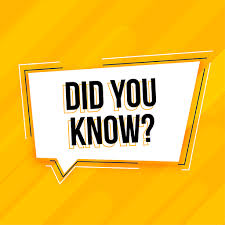
simply amazing, always for you.
A decade is 10 years, and a century is 100 years.

A decade and a century are terms used to represent specific spans of time, and they are often mentioned in historical contexts, when measuring progress or observing significant changes in society, culture, or technology. Let’s take a deeper look into each term, its meaning, and how they are used in our daily lives.
What is a Decade?
A decade is simply a period of 10 years. The word itself comes from the Greek word dekas, meaning ten. Decades are often used as a way to categorize or divide historical events, trends, or phenomena. For example, the 1990s is often referred to as “the ’90s,” encompassing the years from 1990 to 1999. This division helps people to recall events, music, fashion, and technology associated with a particular period. The 1960s are known for the counterculture movement and the space race, while the 2010s saw the rise of social media and smartphones.
Decades allow us to think in chunks of time rather than in individual years. People often look back at a specific decade to analyze the changes that happened in that period. It can be used to group historical events into broader patterns of cultural, political, and technological development. For example, a “decade of war” might refer to the 1940s, which were dominated by World War II, whereas the 1980s could be considered the decade of the rise of personal computers.
The notion of a decade also makes it easier to consider long-term changes in society. A person’s life can be broken down into decades, and each decade represents a distinct stage of life. The first decade of life is marked by infancy and early childhood, while the second decade involves adolescence and early adulthood.
The Importance of Decades in History
Decades also play a crucial role in measuring historical change. By breaking time into ten-year intervals, historians and sociologists can more easily track trends. For example, the 1920s is often referred to as the “Roaring Twenties,” a time known for cultural excess, the jazz age, and the rise of consumerism. By the time you move to the 1930s, you’re talking about the Great Depression and its economic and social repercussions. This type of grouping allows a better understanding of how certain periods of time differ from others.
Decades are often used in collective memory. People tend to remember major events by decade, such as the 1960s being the decade of civil rights movements, 1970s for the cultural revolutions, or the 2000s for the dot-com boom and the rise of the internet. This helps us categorize history into bite-sized, easily understandable segments.
What is a Century?
A century, on the other hand, is a period of 100 years. The word “century” comes from the Latin word centuria, meaning a group of one hundred. A century is a much larger block of time than a decade, so it represents a wider range of human history, and therefore, often reflects larger, more sweeping changes in society, politics, and culture. For example, when we talk about the 20th century (from 1901 to 2000), we cover a period of immense transformation—two world wars, the rise of modern technology, the beginning of the space age, and the growth of global economies.
Just as decades allow us to reflect on ten years of change, centuries give us a way to reflect on and understand broader shifts in human history. For instance, the 19th century saw the Industrial Revolution, which transformed societies around the world, while the 21st century has thus far been marked by rapid technological advancements, climate change discussions, and globalization.

The Century as a Cultural Marker
Centuries also serve as important cultural markers. They allow societies to categorize and measure progress across larger timescales. People often describe the 18th century as an age of enlightenment and revolutionary ideas, while the 16th century could be seen as the age of exploration, with major maritime discoveries being made by explorers such as Christopher Columbus.
When looking at a century as a whole, it’s important to note that within any given century, there are often many different movements, revolutions, wars, and advancements that shape the period. For instance, within the 20th century, you had the First World War (1914-1918), the Great Depression (1929), the Second World War (1939-1945), the Cold War era, the Civil Rights movements, and the technological advancements of the 1990s and 2000s.
Comparing a Decade and a Century
Though both a decade and a century measure time, they do so on very different scales. A decade focuses on a small time span of ten years, allowing for a more detailed focus on individual events, people, and shifts. It’s often more useful in cultural discussions. For example, the phrase “the 80s” brings a specific image to mind, evoking everything from fashion to music to technology.
A century, by contrast, covers a much longer period and allows people to observe major trends and changes across broader social, technological, and political movements. It’s often a unit of measure used by historians, economists, and sociologists to describe and understand significant long-term shifts in the world.
A Personal Reflection on Decades and Centuries
From a more personal perspective, decades and centuries give us a way to reflect on our own lives. We might say that someone was born in the 1990s or that someone lived through the 21st century, which evokes a sense of how much the world has changed. Our personal milestones, such as turning 30 or 40, might also tie into how we look at decades and the chapters they represent in our lives.
In contrast, the century becomes a tool for understanding entire generations, or even for future generations to look back on. For example, a century after a significant event, like World War II, historians and citizens look at it through the lens of the time passed and how the world has transformed in those 100 years.
Conclusion
A decade, a period of 10 years, is a useful tool for dividing and categorizing smaller chunks of time, particularly when we want to focus on cultural shifts, trends, or specific events. A century, representing 100 years, provides a much broader scope for understanding the large-scale developments in history, society, and technology. Both measurements help us to understand the passage of time in different ways and offer valuable perspectives, whether we are talking about personal milestones or analyzing the significant movements that shaped our world.

Support Our Website!
We appreciate your visit and hope you find our content valuable. If you’d like to support us further, please consider contributing through the TILL NUMBER: 9549825. Your support helps us keep delivering great content!
Thank you for your generosity!
